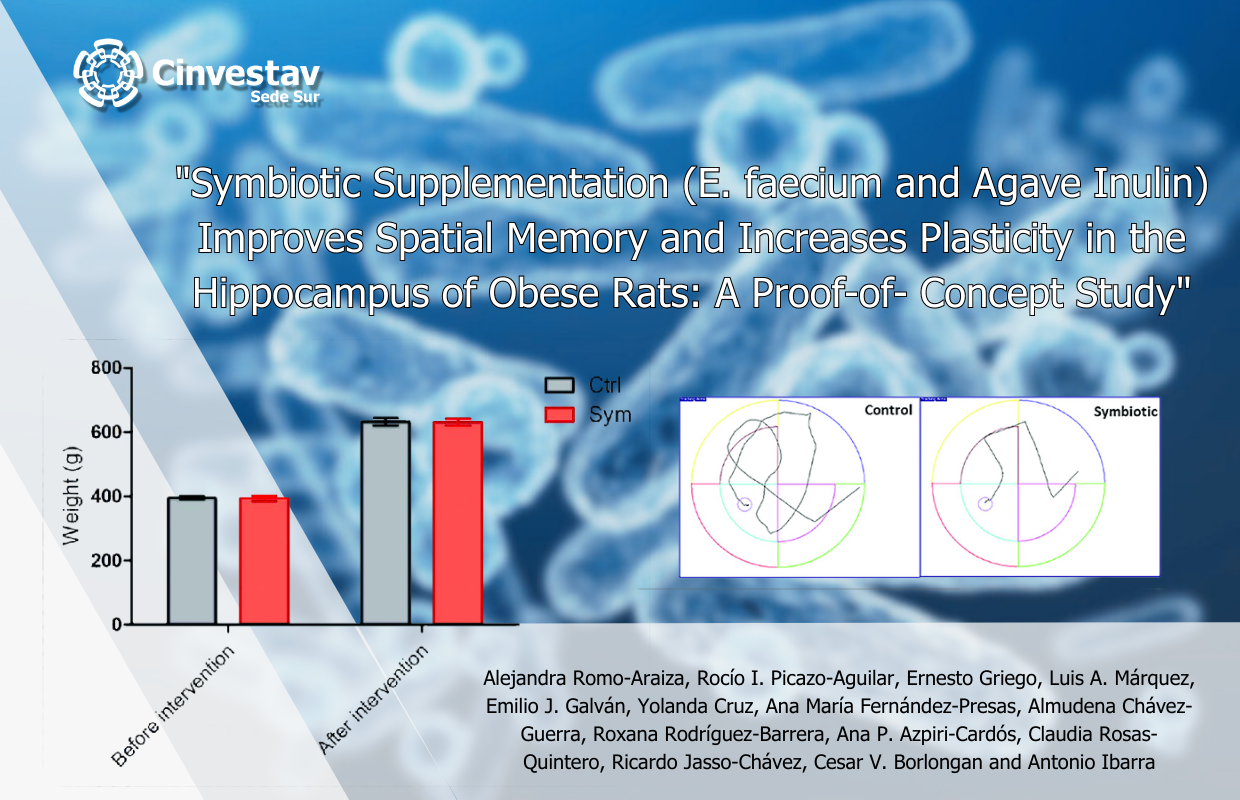Emilio J. Galván - Symbiotic Supplementation (E. faecium and Agave Inulin) Improves Spatial Memory and Increases Plasticity in the Hippocampus of Obese Rats: A Proof-of-Concept Study

Junio de 2023
Invitamos a leer el artículo: “Symbiotic Supplementation (E. faecium and Agave Inulin) Improves Spatial Memory and Increases Plasticity in the Hippocampus of Obese Rats: A Proof-of-Concept Study”, en la que colaboró el Doctor Emilio J. Galván, Investigador de Cinvestav Sede Sur
Autores: Alejandra Romo Araiza, Rocío I. Picazo Aguilar, Ernesto Griego, Luis A. Márquez, Emilio J. Galván, Yolanda Cruz, Ana María Fernández Presas, Almudena Chávez Guerra, Roxana Rodríguez Barrera, Ana P. Azpiri Cardós, Claudia Rosas Quintero, Ricardo Jasso Chávez, Cesar V. Borlongan, y Antonio Ibarra
Felicitamos al estudiantado y profesorado que contribuyeron en esta investigación por su arduo trabajo.
Abstract: Obesity has been linked to cognitive impairment through systemic low-grade inflammation. High fat and sugar diets (HFSDs) also induce systemic inflammation, either by induced Toll-like receptor 4 response, or by causing dysbiosis. This study aimed to evaluate the effect of symbiotics supplementation on spatial and working memory, butyrate concentration, neurogenesis, and electrophysiological recovery of HFSD-fed rats. In a first experiment, Sprague-Dawley male rats were given HFSD for 10 weeks, after which they were randomized into 2 groups (n = 10 per group): water (control), or Enterococcus faecium + inulin (symbiotic) administration, for 5 weeks. In the fifth week, spatial and working memory was analyzed through the Morris Water Maze (MWM) and Eight-Arm Radial Maze (RAM) tests, respectively, with 1 week apart between tests. At the end of the study, butyrate levels from feces and neurogenesis at hippocampus were determined. In a second experiment with similar characteristics, the hippocampus was extracted to perform electrophysiological studies. Symbiotic-supplemented rats showed a significantly better memory, butyrate concentrations, and neurogenesis. This group also presented an increased firing frequency in hippocampal neurons [and a larger N-methyl--aspartate (NMDA)/α-amino-3-hydroxyl-5-methyl-4-isoxazole-propionate (AMPA) current ratio] suggesting an increase in NMDA receptors, which in turn is associated with an enhancement in long-term potentiation and synaptic plasticity. Therefore, our results suggest that symbiotics could restore obesity-related memory impairment and promote synaptic plasticity.
Keywords: symbiotics, obesity, cognitive impairment, memory, LTP